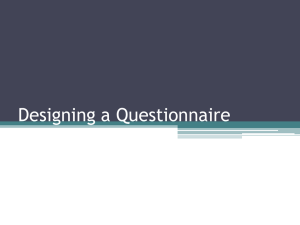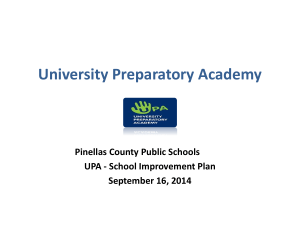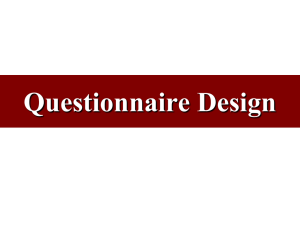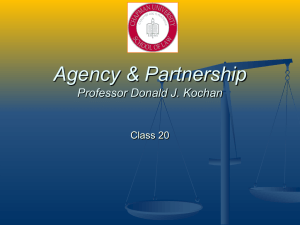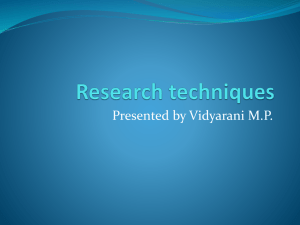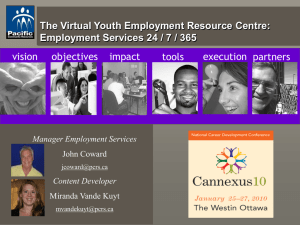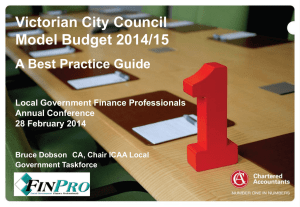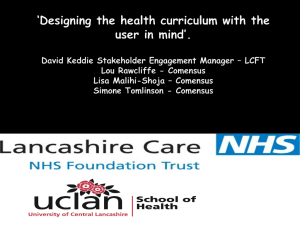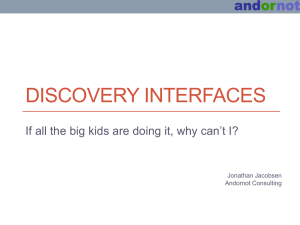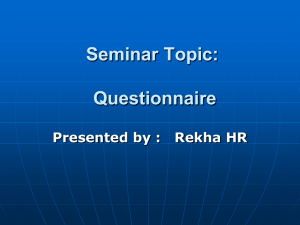Mon_Bayside104_1630_Reid
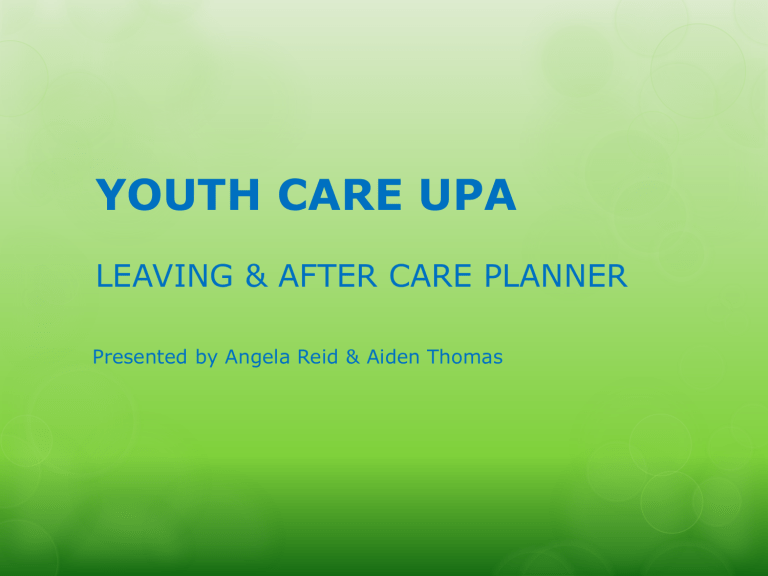
YOUTH CARE UPA
LEAVING & AFTER CARE PLANNER
Presented by Angela Reid & Aiden Thomas
YOUTH CARE UPA
Youth Care UPA is an OoHC organisation for young people ages
0-18yrs. We are located in
Alstonville, NSW and are currently funded for 23 young people ranging from general foster care to intensive foster care. We provide this service in the Far North Coast region.
Presentation Overview
- IDEA
- PURPOSE
- PLANNER CONTENT
- SUPPLIMENTARY PROGRAM
- MONITORING
IDEA…
SCARED
CONFUSED
UNSURE
NERVOUS
LOST
What they thought they would need to know?
What they would have found useful?
What skills/information they found they were lacking?
PURPOSE
Something tangible
Could be read, learnt from & referred to
Informative & skills based
Time to prepare for their future
Learn Skills
Generate Questions & Conversations
Gain Knowledge
Know what they wanted
Hold
Read
Write In
Work Through
Self Care Skills
Take a shower daily
Wash hair with shampoo and conditioner regularly
Clean and floss teeth daily
Use a deodorant daily
(not just body spray)
Brush / comb hair everyday
Know how to check for head lice and eggs.
Know how to treat head lice and eggs.
Know how to attend to all feminine hygiene issues or who to contact if assistance is required.
Know how to properly clean all body parts
SELF CARE SKILLS
I Do this
Yes / No
CARER
The Young
Person Does
This
Yes / No
CARER
Comments
Social Skills Questionnaire
Basic Daily Living Skills
I am confident at asking people for help when I need it
1 - Not like me
I have trusted adults I can talk to about my problems
I know 2 or more people I can turn to for help
I ask questions when I don't understand something
1
1
1
1
2
2
2
2
Taking Responsibility
I am respectful and polite to others
I respect other people's belongings
I thank people when they do things for me
I show others that I care about them
I can express how I'm feeling
I know how to control my anger
I respond appropriately when introduced to someone
I think about how my choices & actions affect others
I accept compliments or praise without feeling embarrassed
I generally receive feedback without getting angry
1
1
1
1
1
1
1
1
1
1
2
2
2
2
2
2
2
2
2
2
Independence Skills
I avoid relationships that hurt or are potentially dangerous
I know the difference between assertive and aggressive behaviour
I respect other's opinions, their lifestyle & their attitudes
When I disagree with someone, I try to reach a compromise
I can communicate my ideas clearly to others
I can describe how to help correct misunderstandings
1
1
1
1
1
1
2
2
2
2
2
2
3
3
3
3
3
3
3
3
3
3
3
3
3
3
3
3
3
3
3
3
5 - M o st like me
4
4
4
4
5
5
5
5
4
4
4
4
4
4
4
4
4
4
4
4
4
4
4
4
5
5
5
5
5
5
5
5
5
5
5
5
5
5
5
5
Make it FUN
Create EXCITEMENT about building on skills
L&ACP Contract
YOUTH CARE UPA
LEAVING CARE PLANNER AGREEMENT
PART 1 – 15YRS
I ***** (D.O.B *****) have today received my Youth Care UPA Leaving Care Planner Part 1 – 15yrs.
I understand that this planner is a living document and is designed to be a source of information for me to build my skills and knowledge to enable me to provide for myself adequately once I transition to independent living.
Part 1 for 15yrs contains the following information:
- Living & Social Skills
- Self-Care Skills
- Relationship & Sex Education
- Drug & Alcohol Information
- Personal Safety
- Food & Nutrition
- Employment Options
- A recipe folder and
- Useful Numbers
It is my responsibility to work through my planner reading the information, performing living skills, going to any meetings/appointments made for me, storing all of my important documents in the planner in a safe and confidential manner & asking questions whenever I need more information.
It is my carer’s responsibility to enable me opportunities to perform living skills, assist my learning by whatever means appropriate, consult with my Caseworker about my progress & seek information for me when I need more information.
It is my Youth Care UPA Caseworker’s responsibility to provide me with each section of the planner as soon as I am age appropriate, read through & explain the information to me, regularly enquire about my progress through my planner, assist my learning by whatever means appropriate, seek information for me when I need more information, arrange and accompany me to any necessary meetings with Community Services & any other services that might arise as I progress through my planner & apply for any required documents.
I ****** state that I have today received my Youth Care UPA Leaving Care Planner; I understand its purpose and agree to meet all of my responsibilities as outlined above.
I ***** state that ***** has today received her Youth Care UPA Leaving Care Planner; I understand its purpose and agree to meet all of my responsibilities as outlined above.
I ***** state that I have today given ***** her Youth Care UPA Leaving Care Planner, I have explained its purpose to both
***** and her carers, and I agree to meet all of my responsibilities as outlined above.
CONTENT
Contents Page - 15yrs
- Living & Social Skills
- Self-Care Skills
- Relationship & Sex Education
- Drug & Alcohol Information
- Personal Safety
- Food & Nutrition
- Employment Options
- A recipe folder and
- Useful Numbers
EMPLOYMENT OPTIONS
Applying for a Tax File Number (TFN)
To receive an income in Australia, you need a Tax File Number (TFN). Income includes wages or salary from a job, payments from the government, and money earned from investments including interest on savings accounts.
In Australia, you can telephone the Australian Taxation Office (ATO) and have a TFN application form sent to you. Alternatively, you can apply for a TFN over the internet.
The table below provides contact details for the ATO:
Australian Taxation Office (ATO) contact details
Telephone
In person
13 2861
See: ATO shopfront locations
Apply for a TFN online See: Online individual Tax File Number (TFN) registration
Homepage See: Australian Taxation Office (ATO)
Please ask your carer to help you apply for a TFN, if you have any problems please speak with your Youth Care UPA Caseworker.
Do I have to put in a tax return?
If you work and earn more than $6000 in one year then you must put in a tax return. If you are under 18 and earn more than $1,333 from investments in one year you must put in a tax return.
The first $6000 you earn is tax-free. This is called the ‘tax-free threshold’. This applies to only one income, so if you work part time and get Youth Allowance, you can only claim the tax-free threshold for either your part-time income or your Youth Allowance income.
Your employer will send you a payment summary after the end of the financial year (30
June). A payment summary used to be called a ‘group certificate’. This summary shows how much you earned in that year and how much tax you paid.
If you earned less than $6000 and tax was taken from your pay, you can put in a tax return to get that money back. This is called a ‘tax refund’.
The Australian Taxation Office website has information about completing a tax return.
USEFUL CONTACTS AND PHONE NUMBERS
Name Phone Number Web site
Ambulance, Police, Fire Department
Lifeline – 24hr counseling service
Kids Helpline
Salvo Care Line 24hr counseling service
Department of Housing (HO Sydney)
Department of Housing
Maintenance
Homeless Persons Information
Service
Aboriginal Homeless Persons Service
Community Services
CENTRELINK
Youth and Students
Disability, Sickness and Carers
Employment Services
Family Assistance
TTY Service
HEALTH SERVICES
Women’s Information and Referral
Service
Family Planning Association
Medicare
Mental Health Information Service
Sexual Health Centre
LEGAL SERVICES
Legal Aid Help Line
Legal Aid Hotline – under 18 years
NSW Ombudsman
The Create Foundation
Commission for Children and Young
People
000
131114
1800551800
93316000
02 98216111
131571
02 92659087
02 97998446
132111
132490
132717
132850
136150
1800810586
1800817227
02 87524300
132150
1800674200
1800451624
1300888529
1800101810
1800451524 www.community.nsw.gov.au www.centrelink.gov.au
www.create.org.au www.kids.nsw.gov.au
Contents Page - 16yrs
- Living & Social Skills –
- Self-Care Skills–
Checklist & Questionnaire
Checklist & Questionnaire
- Relationship & Sex Education–
- Drug & Alcohol Information–
Checklist & Questionnaire
Checklist & Questionnaire
- Personal Safety–
- Food & Nutrition–
Checklist & Questionnaire
Checklist & Questionnaire
- Employment Options–
Checklist & Questionnaire
- Centrelink & Youth Allowance
-
Budgeting, Savings & Financial Independence
- How to Get Around –
Travel, Transport, Driving
- Passport Application
BUDGETING & SAVINGS PLAN
Once receiving your Youth Allowance you will notice a substantial increase in the money you are receiving.
It is recommended that a separate savings account (in your name only) be set up and a portion of the benefit be saved each fortnight. To enable you access to your account in the event that your key card is lost/stolen it may be an option, with your consent, that the account be set up having two people to sign for withdrawals. For example, yours and your carer.
Ideally, it is recommended that half of the Youth Allowance be placed into the savings account; however the amount to be saved can be negotiated. Your Youth Care UPA Case
Worker will discuss this with you and explain the purpose and benefits of the saving account.
The purpose of the savings account is to help you prepare for leaving care by teaching you to save and budget. It is also used to help you buy any bigger more expensive items whilst you are in care or to set yourself up in your own place once left care. For example, if you can manage to save $50 per week ($100 each fortnightly payment) and not touch the money until you turn 18, you should have about - $100 x 26 (fortnights) x 3 (years) = $7800!!! Think of the things you could buy yourself with $7800!!!
At all times the money in the savings account is yours alone and although it is hoped that you will save the money or use it wisely you can choose to spend it as you wish.
Once receiving your own benefit, carers are no-longer required to give you pocket money.
You do not have to pay ‘board’ with your money, though you may be asked to contribute towards more expensive items that you would like eg. ‘brand’ name clothing/items, mobile phones, internet, social activities etc
If at any time you are unsure of what you should be responsible for or contribute towards please talk about it with your Case Worker.
Here is a budget for you to get an understanding of how a budget can really help you understand your bills.
If you receive a Benefit of $300 per fortnight.
1.
Average rent for a room in Lismore is $100 Per Week.
2.
Average Electricity cost for a single person $150 Per Quarter.
3.
Rental Costs of a home phone $30 Per Month + Calls, $20-$30 per week Pre Paid.
4.
Average food bill for 1 person for 1 week $70.
How do you work out those figures against the budget?
1.
Break each payment into Fortnightly increments.
2.
E.g. Rent $100 Per Week = ($100 *2 = $200 per fortnight).
3.
Move the broken down figures on the budget.
You Should pay the bills in the order you prioritized them when setting up your budget with your carer and/or Case Worker.
1) Rent / Board
3) Electricity
4) Phone
5) Travel / Fuel
7) Savings
8) Clothing
9) Entertainment
ITEM
2) Food expenses
6) Other utilities eg. Water, gas
WEEKLY COST
$100
$80
$12.50
$30
$50
$0
$0
$0
$0
FORTNIGHTLY COST
$200
$160
$25
$60
$100
$0
$0
$0
$0
TOTAL COSTS $272.5 $545
INCOME
BALANCE
$150
-$122.5
$300
-$245
As you can see there is not enough income to cover all of the Bills, this is not a sustainable living option.
DRIVING SKILLS
As you are now 16 you will start to think about getting your license (if you haven’t already!).
The best place to find information on getting your license is on the RTA website: http://www.rta.nsw.gov.au
If you’re at least 16 years old, you’re ready to begin.
The first step is to pass the Driver Knowledge Test (DKT).
But before you head off to the RTA motor registry, you’ve got some preparation to do.
The first thing to do is read the Road Users’ Handbook and the pamphlet Getting your driver licence.
To help you out, the Road Users’ Handbook is available on the
RTA website – including questions for you to tackle as you go through it.
These are the kinds of questions that you’ll need to answer in the
DKT.
Electronic versions of the handbook and the DKT have been translated into Arabic, Chinese, Croatian, Greek, Korean, Serbian,
Spanish, Turkish and Vietnamese. The handbook – but not the test – is also available in Japanese.
Ready to go?
Heaps of people are doing licence tests all the time so you have to book. You can do this online, by phoning 13 22 13 or in person at any motor registry.
When you go to do your test you’ll need to take proof of your identity such as your birth certificate or passport, proof of signature and address, and be prepared to pay the fee.
You’ll also have your eyes tested – for obvious reasons!
When you’ve passed
Congratulations – you are now an L plater. Learner licences issued from 1 July 2007 are valid for five years, giving you plenty of time to practice and get moving towards the next step – your P1 licence.
PASSPORT APPLICATION
A passport application for a child must be lodged by a parent or other person with a parental responsibility for the child. The person lodging the application must also provide proof of their identity. An Australian citizen under 18 years of age who has never married is regarded as a child.
Before a passport may be issued to a child, the written consent of all persons with parental responsibility for the child is needed. Passport application forms can be filled in and printed online, but not lodged.
What is needed to use this service?
When you apply for a child's Australian passport, you must provide the child's FULL birth certificate as well as any previous Australian passport that the child may have had.
If the child was born in Australia, you will need to provide an original document that confirms one parent's Australian citizenship or permanent residency at the time of the child's birth. Applicants born of New Zealand parents must present an "Evidence of Australian Citizenship" or an equivalent citizenship certificate.
If you are presenting Court Orders with the application, you must complete Form B7
- No Further Court Orders.
You may also be required to complete Form B11 - General Declaration by Passport
Applicant in order to provide additional information on a particular issue.
For children subject to Child Protection Orders under state/territory law, complete
Form B10 – Child subject to a state/territory child welfare
Children and Parental Consent
There are laws governing the issue of passports to children.
These laws are designed to protect children from abduction and to safeguard the rights of all people with parental responsibility for children.
This page outlines the requirement for the consent of people with parental responsibility when applying for a child’s passport.
Who needs to give consent?
It is a requirement of the Australian Passports Act 2005 that before a passport may be issued to a child (anyone under 18 years who has never married) the written consent of all people with parental responsibility for the child is needed.
Where persons with parental responsibility are in separate locations, the non-lodging person may provide consent through their closest passport office or Australian diplomatic or consular post.
Contents Page - 17yrs
-
Living & Social Skills
–
-
Self-Care Skills
–
Checklist & Questionnaire
Checklist & Questionnaire
-
Relationship & Sex Education
–
-
Drug & Alcohol Information
–
Checklist & Questionnaire
Checklist & Questionnaire
-
Personal Safety
–
-
Food & Nutrition
–
Checklist & Questionnaire
Checklist & Questionnaire
-
Employment Options
–
Checklist & Questionnaire
-
Centrelink & Youth Allowance
–
Checklist & Questionnaire
-
Budgeting, Savings & Financial Independence
–
-
How to Get Around
–
Checklist & Questionnaire
-
Passport Application
–
Checklist & Questionnaire
Checklist & Questionnaire
Contents Page - 17yrs Cont.
-
After Care Plan
-
ADHC Referral
-
Original Documents
-
Housing
–
TILA & T-Number
-
Home Essentials
-
Future Plans
-
Access to Savings
-
Driving
–
P1 & P2
-
Buying a Car
-
Access to Personal File
-
Legal Advice
ORIGINAL DOCUMENTS
As you will be officially leaving care when you turn 18 it is important that you possess all of your important original documents as you will need them at some stage.
Below is a table outlining what documents you should either already have or will receive.
Once receiving them, please keep them together in this folder in a safe and confidential manner.
It would be best to start seeing if you have these documents (or they are available) a minimum of 6mths before you turn 18 in case something needs to be applied for.
If you have any questions please speak to your Youth Care UPA Caseworker about it.
DOCUMENT/ITEM
NAME
Birth Certificate
Medicare Card
Health Care Card
Immunization Records
Medical Records
Passport
Drivers License/ID
Card
ATM Card & Account
Details
CS After Care Plan
DATE RECEIVED YOUNG PERSON
SIGNATURE
CASEWORKER
SIGNATURE
HOUSING
TILA/T NUMBER
What kind of rental am I looking for?
To find the perfect place to rent, do some research to get a good idea of what rentals are worth and the bargaining power to land a good deal. Ask yourself these questions:
What are your options? The private rental market is the most obvious choice, however community, student or public housing could be the best option if you're on a tight budget.
What's your budget? Research your options for rental assistance .
Who'll live in your house? Share houses are cheap, practical and can be fun, but going solo gives you privacy and independence.
House or apartment? Flats or apartments are smaller, but generally there's more available for rent and they're more secure than a house. Houses are bigger, have a backyard and usually fit more people.
Where's the couch? Furniture costs money, so work out what you have already, what you need and what you can borrow from friends or family. Visit second hand stores and garage sales for bargains.
Where's your neighbourhood? Transport, work, study, entertainment, friends, family and access to some services will all impact on this decision.
Where do I look?
Newspapers
The real estate or 'to let' sections of the big newspapers and local community publications are a good place to start your search.
Online
Many newspapers publish their printed classifieds online. An online search is a quick way to compare what's available within your budget range in different cities, towns or suburbs.
Domain.com.au
and realestate.com.au
are two popular sites where you can look for a place to rent.
Noticeboards and bookshops
If you're searching for a room in a share house, notice-boards are a great local resource.
Popular locations for notices include bookshops, cafés and supermarkets. Universities and
TAFEs usually have dedicated or informal places where students pin up their advertisements.
HOME ESSENTIALS
You will no doubt have noticed as you look around your carers home and your bedroom that it takes a lot of ‘stuff’ to be able to set up a house with the essentials you will need to live on your own.
Below is a list of items that will set you up in your own place comfortably. It is your responsibility to acquire these items for yourself and it is best to start as soon as possible to space out the cost. The table does not include any food or drink items nor does it include any personal items.
Some of the below items are not absolute essentials eg TV but it is something that nearly everyone will have in their home and something that you will no doubt want, where others eg sheet sets are absolute essentials and you must have them if you are going to live on your own.
A good way to acquire some of these items is to ask for them as birthday and Christmas gifts off you carer/s, friends, family etc it might not be very exciting but it will save you a lot of money.
It is also recommended that you purchase the smaller items regularly from your left over
Youth Allowance money (not your savings) eg. a plastic mixing bowl set from Kmart might cost you about $3 so if you have $50 a week to spend, you will still have $47 and now have something to add to your home essentials pack, purchasing items this way means that you will end up with a lot of things without having to sacrifice too much money each week.
You can also lay-by items at different stores and pay them off week by week which might also be a good idea.
Once you do purchase or receive an item, note down the date you got it and check if it has a warranty as some warranties will need to be sent away. Keep all of your warranties and receipts in this folder.
Store any items that you collect in a safe place where they cannot be lost or damaged before you have the chance to use them.
ITEM
KITCHEN
Sml
T-Towels (4)
Sink Plug
Mixing Bowl Set
Kitchen Utensil Set –
Ladle
Strainer
Spaghetti spoon
Egg lifter
Tongs
Wisk
Wooden Spoons
Potato Masher etc
Chef Knife
Toaster
Jug
Cutting Board/s
Spatula
Sink Drainer
Saucepan Set with Fry
Pan
Measuring Cups
Measuring Spoons
Colander
Oven Tray/Dish
Can Opener
Canister Set
Cheese Grater
Pot Holders
Dishcloths
Rolling Pin
HOME ESSENTIALS LIST
PURCHASE
DATE
WARRENTY
Y/N
NOTES
SUPPLIMENTARY
Certificate of Attendance
T H I S C E R T I F I C A T E I S
P R E S E N T E D T O
* * * * * *
For
Attending and completing the cooking skills course held on
Monday 2nd July 2012 (9hrs duration).
During this time you learnt and demonstrated skills in:
Cooking breakfast dishes, main meals, salads and side dishes, budgeting, shopping for ingredients, cleaning, group work participation and co-operation.
WELL DONE!
Angela Reid Date
YOUTH CARE UPA
TRANSPORT & SERVICES
Where would you go to access funds stated in your Leaving Care Plan?
MENTORING
MONITORING
- Fortnightly Visits to
Carers & Young People
- Biannual Case Reviews
To contact us:
Angela Reid & Aiden Thomas
Address: 101-103 Main Street, Alstonville, NSW, 2477
Office Number: 02 6628 1255
Email: areid@upanthcoast.org
THANK-YOU
